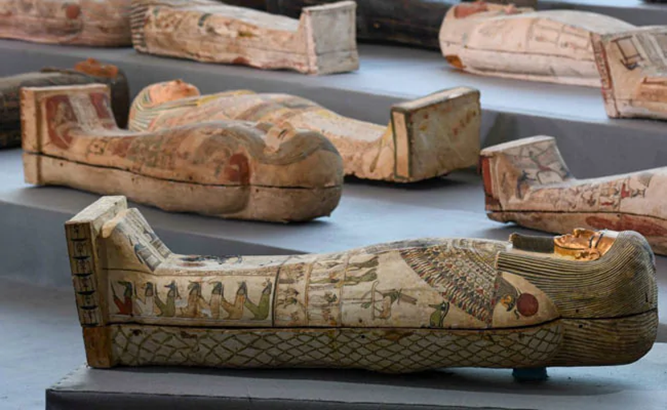- Courses
- GS Full Course 1 Year
- GS Full Course 2 Year
- GS Full Course 3 Year
- GS Full Course Till Selection
- CSAT
- 5 LAYERED ARJUNA Mentorship
- Public Administration Optional
- Online Program
- GS Recorded Course
- NCERT Batch
- Polity Module Course
- Geography Module Course
- Economy Module Course
- AMAC Module Course
- Modern India, Post Independence & World History Module Course
- Environment Module Course
- Governance Module Course
- Science & Tech. Module Course
- International Relations and Internal Security Module Course
- Disaster Management Module Course
- Ethics Module Course
- Essay Module Course
- Current Affairs Module Course
- ABOUT US
- OUR TOPPERS
- TEST SERIES
- FREE STUDY MATERIAL
- VIDEOS
- CONTACT US
The Fascinating World of Sarcophagi
The Fascinating World of Sarcophagi
04-06-2024

A recent study has uncovered a fragment of a sarcophagus beneath a religious center, revealing its connection to Pharaoh Ramesses II, one of the prominent ancient Egyptian rulers.
What is a Sarcophagus?
- A sarcophagus is an elaborately decorated container or coffin designed to hold a casket.
- Originally intended for above-ground display, sarcophagi were sometimes entombed or placed in burial chambers.
- Throughout history, sarcophagi have been used to preserve and honor the remains of notable individuals, dating back to ancient Egypt, Rome, and Greece.
- Etymologically, the term "sarcophagus" originates from the Greek words "sarx" (flesh) and "phagien" (to eat), translating literally as "eater of flesh."
Historical Evolution:
- Sarcophagi first emerged in ancient Egypt and Greece and gradually gained popularity throughout the ancient world.
- The tradition continued in later years within European society, often reserved for high-ranking members of the clergy, government, or aristocracy.
Features of Sarcophagi:
- Sarcophagi vary in design and details across different cultures.
- While almost always made of stone, limestone was the most commonly used material, with occasional use of granite, sandstone, or marble.
- Elaborate decorations adorned sarcophagi, including carvings, images, and inscriptions, often featuring the name of the deceased.
Archaeological Significance:
- Sarcophagi hold significant value for archaeologists and historians, providing insights into the cultures, arts, and beliefs of the societies that created them.
- The inscriptions and carvings on sarcophagi often contain valuable historical information.
Case Study: The Golden Sarcophagus of King Tutankhamun
- Among the most famous Egyptian sarcophagi is the golden sarcophagus of King Tutankhamun, discovered in 1922.
- It showcases the artistry and grandeur of ancient Egyptian craftsmanship.
About King Tutankhamun:
- Tutankhamun (14th century BCE) was an ancient Egyptian king known for his largely intact tomb, KV 62, found in the Valley of the Kings.
- During his reign, he oversaw the restoration of traditional Egyptian religion and art, which had been altered by his predecessor, Akhenaten.
Must Check: UPSC Coaching Institute In Delhi



